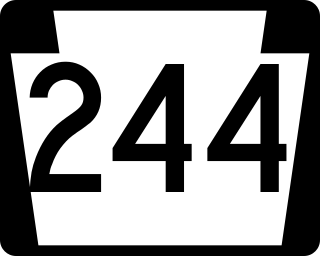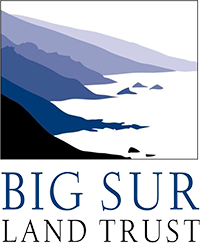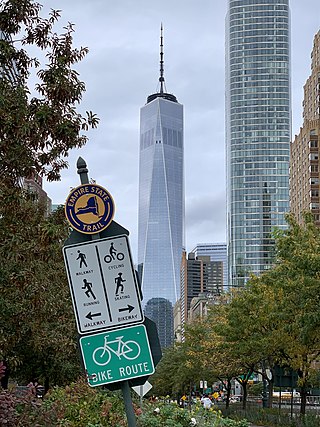
Livingston County is a county in the U.S. state of New York. As of the 2020 census, the population was 61,834. Its county seat is Geneseo. The county is named after Robert R. Livingston, who helped draft the Declaration of Independence and negotiated the Louisiana Purchase.

Letchworth State Park is a 14,427-acre (5,838 ha) New York State Park located in Livingston County and Wyoming County in the western part of the State of New York. The park is roughly 17 miles (27 km) long, following the course of the Genesee River as it flows north through a deep gorge and over several large waterfalls. It is located 35 miles (56 km) southwest of Rochester and 60 miles (97 km) southeast of Buffalo, and spans portions of the Livingston County towns of Leicester, Mount Morris and Portage, as well as the Wyoming County towns of Castile and Genesee Falls.
Angelica is a village in the town of Angelica in Allegany County, New York, United States. The population was 869 at the 2010 census. The village and the town are named after Angelica Schuyler Church, a daughter of General Philip Schuyler, sister-in-law of Founding Father Alexander Hamilton and wife of John Barker Church.

The Genesee River is a tributary of Lake Ontario flowing northward through the Twin Tiers of Pennsylvania and New York in the United States. The river contains several waterfalls in New York at Letchworth State Park and Rochester.
The Genesee Valley Canal Railroad was a part of the Pennsylvania Railroad system in western New York. It was built on the former Genesee Valley Canal alignment.

The Office of Surface Mining Reclamation and Enforcement (OSMRE) is a branch of the United States Department of the Interior. It is the federal agency entrusted with the implementation and enforcement of the Surface Mining Control and Reclamation Act of 1977 (SMCRA), which attached a per-ton fee to all extracted coal in order to fund an interest-accruing trust to be used for reclamation of abandoned mine lands, as well as established a set environmental standards that mines must follow while operating, and achieve when reclaiming mined land, in order to minimize environmental impact. OSMRE has fewer than 500 employees, who work in either the national office in Washington, DC, or of the many regional and field offices.

List of the National Register of Historic Places listings in Genesee County, New York

The Genesee Valley Greenway is a rail trail in western New York's Genesee River valley.
King's Highway 40, commonly referred to as Highway 40, is a provincially maintained highway in the southwestern portion of the Canadian province of Ontario. The 91.4-kilometre (56.8 mi) route links Chatham and Sarnia via Wallaceburg, following close to the St. Clair River. The southern terminus is at Highway 401 south of Chatham, while the northern terminus is at Highway 402 in Sarnia. The portion of Highway 40 between Highway 401 and north of Wallaceburg is within the municipality of Chatham-Kent, while the portion north of there is within Lambton County.

The Lariat Loop National Scenic and Historic Byway is a National Scenic Byway and a Colorado Scenic and Historic Byway located in Jefferson County, Colorado, USA. The byway is a 40-mile (64 km) loop in the Front Range foothills west of Denver through Golden, Lookout Mountain Park, Genesee Park, Evergreen, Morrison, Red Rocks Park, and Dinosaur Ridge. The Lariat Loop connects to the Mount Evans Scenic Byway at Bergen Park.

Pennsylvania Route 244 is a 17-mile-long (27 km) state highway located in Potter County, Pennsylvania. The western terminus is at PA 44 in Coneville. The eastern terminus is the New York state line in Genesee Township. The route passes through rural areas, intersecting PA 449 in Genesee. The route was paved in 1931 and designated by 1941 between PA 44 and PA 449. PA 244 was extended to the New York state line in 1982. In 2011, the Genesee River bridge was replaced, eliminating a detour that had been in place since 2003.

Pennsylvania Route 449 is a 17-mile-long (27 km) state highway located in Potter County, Pennsylvania. The southern terminus is at U.S. Route 6 in Walton. The northern terminus is the New York state line in Genesee Township, where the road continues into that state as New York State Route 19.
Farmland preservation is a joint effort by non-governmental organizations and local governments to set aside and protect examples of a region's farmland for the use, education, and enjoyment of future generations. They are operated mostly at state and local levels by government agencies or private entities such as land trusts and are designed to limit conversion of agricultural land to other uses that otherwise might have been more financially attractive to the land owner. Every state provides tax relief through differential (preferential) assessment. Less common approaches include establishing agricultural districts, using zoning to protect agricultural land, purchasing development rights, and transferable development rights. It is often a part of regional planning and national historic preservation.
Mount Raimer, 2,572 feet (784 m), is a prominent peak in the Taconic Mountains of western Massachusetts and adjacent New York. The west side and summit are located in New York; the east slopes lie within Massachusetts. The summit ridge is part meadow and part wooded with red spruce, balsam fir, and northern hardwood tree species. It is notable for its views of the Hoosic River valley and Hudson River Valley. The 35 mi (56 km) Taconic Crest Trail traverses the mountain. Much of the upper slopes and summit are within protected conservation land. The mountain is the location of a defunct ski area.
The Rideau Valley Conservation Authority (RVCA) is an inter-municipal environmental protection and advisory agency that works with local municipalities, government agencies, special interest groups and the general public to protect the natural resources of the Rideau River watershed. The watershed drains an area of over 4,000 square kilometres of eastern Ontario and includes towns such as Portland, Perth, Smith Falls, Merrickville, Kemptville, and Manotick. About 620,000 live in the watershed, mostly deriving from the City of Ottawa. There are 18 municipalities within the valley and most people, outside of Ottawa, draw their drinking water from the river or from groundwater.
California Rangeland Trust is a nonprofit organization founded in 1998 by a group of innovative ranchers committed to conservation. The Rangeland Trust is now the largest land trust in California, having conserved over 371,000 acres (1,500 km2) of rangeland on 90 ranches across 26 counties.

Open Source Ecology (OSE) is a network of farmers, engineers, architects and supporters, whose main goal is the eventual manufacturing of the Global Village Construction Set (GVCS). As described by Open Source Ecology "the GVCS is an open technological platform that allows for the easy fabrication of the 50 types of industrial machines that it takes to build a small civilization with modern comforts". Groups in Oberlin, Ohio, Pennsylvania, New York and California are developing blueprints, and building prototypes in order to test them on the Factor e Farm in rural Missouri. 3D-Print.com reports that OSE has been experimenting with RepRap 3-D printers, as suggested by academics for sustainable development.

The Big Sur Land Trust is a private 501(c)(3) non-profit located in Monterey, California, that has played an instrumental role in preserving land in California's Big Sur and Central Coast regions. The trust was the first to conceive of and use the "conservation buyer" method in 1989 by partnering with government and developers to offer tax benefits as an inducement to sell land at below-market rates. As of 2016, it has protected around 40,000 acres (16,187 ha) through acquisition and resale to government agencies. It has added conservation easements to another 17,000 acres (6,880 ha) and has retained ownership of a number of parcels totaling about 4,500 acres (1,821 ha).

The Empire State Trail is a multi-use trail in New York State that was proposed by Governor Andrew Cuomo in January 2017 and completed in December 2020. The trail runs from Manhattan north to the Canadian border in Rouses Point near the northern tip of Lake Champlain, and also from Buffalo to Albany. At 750 miles (1,210 km), it is the longest multi-use trail in the United States. The trail includes pre-existing trail segments, which retain their existing identity but are now co-signed as a segment of the Empire State Trail. The trail also links to other regional bicycling and hiking trails such as the Appalachian Trail, the Adirondack and Catskill Parks, the Great Lakes Seaway Trail, the Genesee Valley Greenway, and others. A segment near its southernmost part, on the Hudson River Greenway in Manhattan, is concurrent with the East Coast Greenway. The trail is used for hiking, biking, snowshoeing, cross-country skiing and in some areas snowmobiling.












